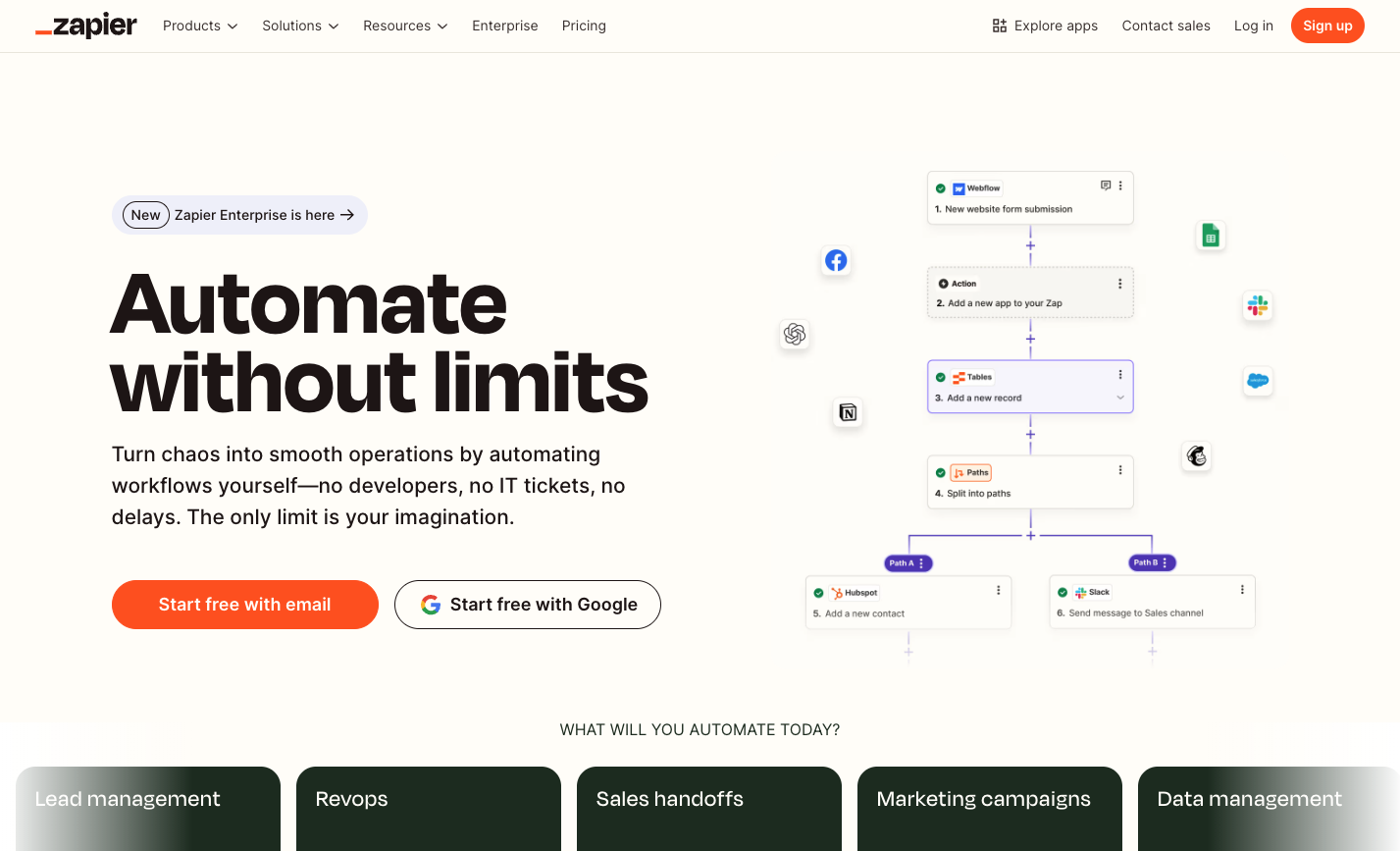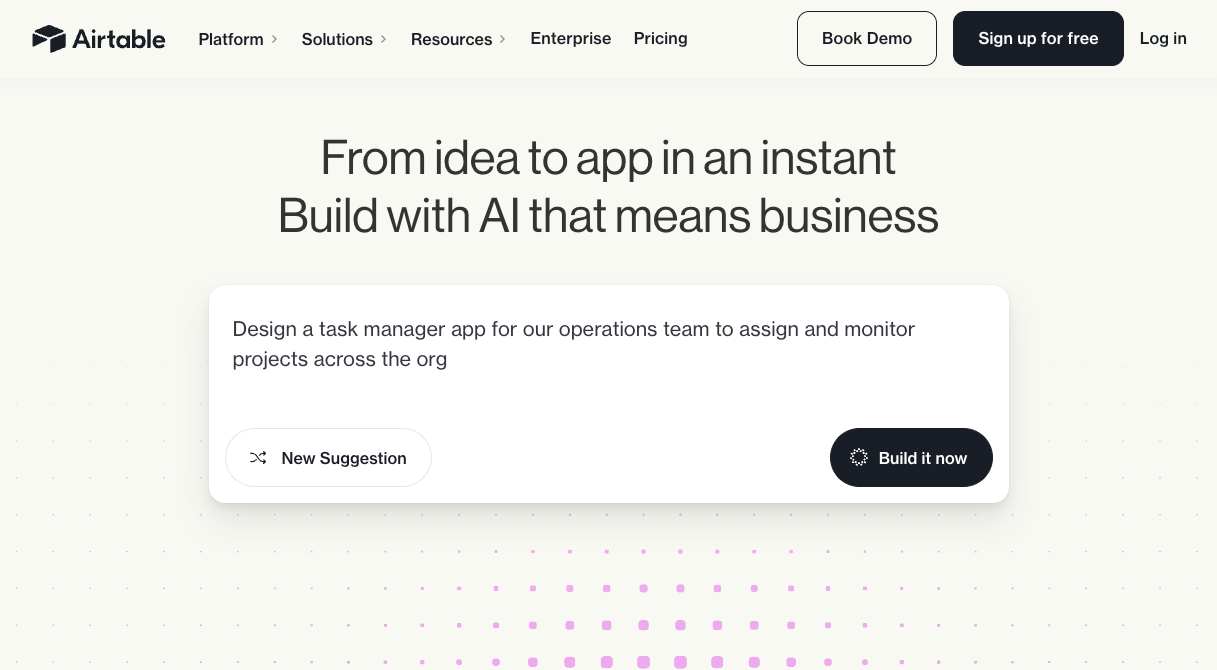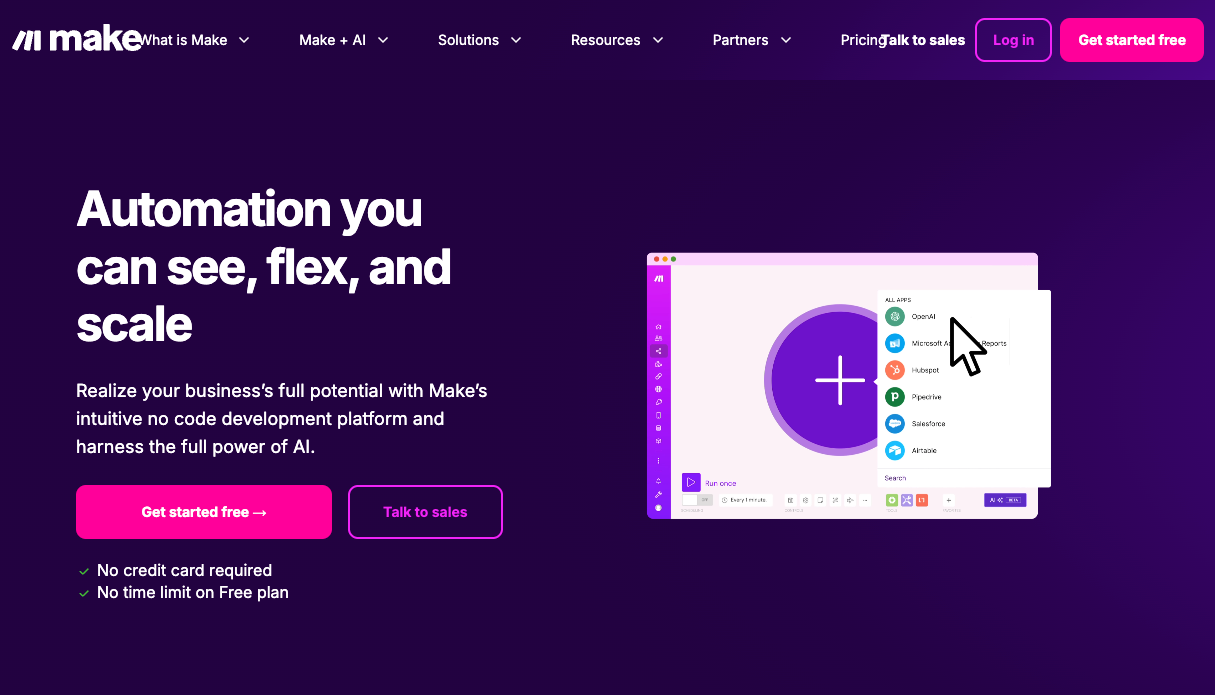
Supercharge Your Productivity: Mastering My Apps with Automation in 2025
The Expanding Digital Toolkit: Understanding "My Apps" in 2025
In 2025, our lives are intricately woven with a vast array of applications. From the moment we wake up, we rely on apps for checking the news, managing our schedules, and communicating with colleagues and friends. At work, we use project management apps, data analysis tools, and communication platforms to get tasks done. In our personal time, entertainment, fitness, and shopping apps cater to our various needs. This collection of "my apps" forms our personal digital ecosystem, a set of tools that we depend on daily for both work and life.
However, this reliance on numerous applications comes with its fair share of challenges. Fragmentation is a common issue. With data spread across multiple apps, it can be difficult to get a holistic view of our work or personal life. For instance, customer information might be stored in a CRM app, while project details are in a separate project management tool. Context - switching is another hurdle. Constantly toggling between different apps disrupts our focus and can lead to decreased productivity. Every time we switch from an email app to a task - management app, it takes a few moments to regain our train of thought. Data silos also pose a problem. Information trapped within individual apps can't be easily shared or integrated, limiting our ability to make informed decisions.
:::: key-takeaways ::::
- Our digital lives in 2025 rely heavily on a diverse set of "my apps" for work and personal use.
- Challenges such as fragmentation, context - switching, and data silos can hinder productivity when managing multiple apps.
- A well - organized approach to "my apps" is essential to overcome these challenges. ::::
Strategies for Organizing and Optimizing My Apps
To bring order to the chaos of multiple apps, categorization is a great starting point. Group your apps by function. For communication, you might have apps like Slack, Gmail, and WhatsApp. Project management apps such as Asana, Trello, or Monday.com can be grouped together. Design - related apps like Adobe Photoshop, Sketch, or Canva should be in their own category. This way, when you need to access a particular type of app, you know exactly where to look.
Consolidation is also crucial. Many of us have redundant apps that serve similar purposes. Take the time to evaluate which apps are truly necessary. For example, if you have two note - taking apps, choose one that best suits your needs in terms of features, ease of use, and integration with other tools. This not only declutters your app collection but also reduces the cognitive load of deciding which app to use for a particular task.
Customization is another powerful strategy. Personalize the settings and notifications of your apps. In a task - management app, you can set up custom task views, prioritize tasks based on your workflow, and adjust notification preferences so that you're only alerted when it's truly necessary. This way, you can optimize all my apos, or applications, for peak performance.
Regular review is the final piece of the puzzle. Periodically audit your app usage. Check which apps you use frequently, which ones are rarely opened, and whether there are new apps in the market that could better serve your needs. This ongoing evaluation ensures that your app collection remains relevant and efficient. A well - organized set of "my apps" is the foundation for increased productivity, allowing you to access the tools you need quickly and easily.

Beyond Individual Apps: The Power of Integration and Automation
While organizing your apps is a great start, the real leap in productivity comes from making them "talk" to each other. Workflow automation platforms have emerged as the solution to connect these disparate applications. Platforms like Zapier (https://zapier.com/), Airtable (https://www.airtable.com/), and Make.com (https://www.make.com/) enable users to create automated workflows between different apps.
For example, with Zapier, you can set up a workflow where when a new lead is added to your CRM, an email is automatically sent to the sales team in Gmail. Airtable, on the other hand, can be used to centralize data from multiple apps and create custom databases. Make.com allows for more complex, multi - step automations. These integrations offer numerous benefits. Data synchronization ensures that information is consistent across different apps. Automated reporting saves time by generating reports without manual intervention. Cross - app notifications keep you informed about important events in different apps, and streamlined task management means tasks can be automatically assigned and tracked across multiple platforms.



Transforming "My Apps" with Bika.ai Automation
Bika.ai is an intuitive and powerful platform for building custom automations for "my apps". It empowers users, regardless of their technical expertise, to create sophisticated workflows that connect their favorite applications. Bika.ai breaks down the app silos that often plague our digital lives, creating seamless operations. Whether managing my apos for business or personal use, Bika.ai simplifies the process.
For example, it can automate repetitive tasks such as data entry between different apps. If you have a form in one app that needs to populate data in another, Bika.ai can handle this without any manual intervention. Its proactive automation capabilities, as illustrated by , can anticipate your needs and trigger actions based on predefined rules.

Automating "My Apps": The Bika.ai Customer projects Template for Project, Customer, Sales, and Task Management
The Customer projects template on Bika.ai is a game - changer for consulting companies, law firms, and sales teams. It serves as a comprehensive solution for project management, customer management, sales management, task management, time tracking, and project tracking.
Why you should use Customer projects
This template helps calculate the hours worked that require compensation, provides a comprehensive overview of project progress, and creates a collaborative platform. For consulting firms, it means accurate billing based on actual hours spent on a project. Law firms can use it to manage client cases more efficiently, and sales teams can track customer projects from start to finish.
How the template works
- Projects Board: This dashboard offers visual insights into project and task status. With charts and numbers, you can quickly understand the progress of your projects. For example, a pie chart might show the percentage of completed tasks in a project.
- Projects Database: It manages all project details such as status, start and end dates, notes, contacts, and tasks. This central repository ensures all relevant information is in one place.
- Task of Projects Database: Tracks task - specific information like task name, owner, start and end dates, status, estimated hours, client cost, and related files. This allows for detailed task management and cost tracking.
- Contacts Database: Stores contact information including name, company, title, type, phone, email, website, and links to customer projects. It's easy to access and manage all your customer contacts.
How to use
- Start by accessing the template.
- Navigate to the Projects Board to get an overview of your projects.
- Use the Projects Database to manage project details.
- Track tasks in the Task of Projects Database.
- Keep your contacts organized in the Contacts Database.
Who should use this template
It's ideal for project managers aiming to streamline their processes and monitor project progress. Sales teams can use it to manage customer projects effectively. Anyone involved in project, customer, or task management will find this template invaluable.
Key Features of This Template
- Comprehensive project management: Manage all aspects of your projects from start to finish.
- Task tracking: Keep tabs on individual tasks and their progress.
- Contact management: Easily store and access contact information.
- Visual dashboards: Get a quick overview of your projects and tasks with charts and numbers.
Frequently Asked Questions
- How do I add a new project?
- Navigate to the Projects Database and fill in the required details.
- Can I customize the status options for projects and tasks?
- Yes, you can modify the status options in the respective database fields.
- How do I link a task to a project?
- In the Task of Projects Database, use the 'Projects' field to link it to the appropriate project in the Projects Database.
This template enhances the overall efficiency of "my apps" by integrating different aspects of project and customer management. It automates tasks, synchronizes data, and streamlines processes across various applications.

Try the Customer projects Template
Conclusion: The Future of Your Digital Workspace
In conclusion, the way we use "my apps" has evolved from simply using them in isolation to strategically organizing and automating them. Bika.ai offers a powerful solution to unlock the full potential of your digital toolkit. By leveraging Bika.ai and its Customer projects template, you can truly optimize my apos ecosystem.
We encourage you to explore Bika.ai to build custom automations and transform your individual apps into a highly efficient, interconnected system. Embrace the future of your digital workspace and take your productivity to new heights.

FAQ
Q: What are the main challenges of managing multiple "my apps"? A: The main challenges include fragmentation, where data is spread across different apps; context - switching, which disrupts focus; and data silos, where information can't be easily shared between apps.
Q: How can Bika.ai's Customer projects template help in project management?
A: The Customer projects template helps in project management by providing a comprehensive overview of project progress, calculating compensable hours, and offering a collaborative platform. It also has components like the Projects Board for visual insights, a Projects Database for managing project details, a Task of Projects Database for task - specific tracking, and a Contacts Database for managing customer contacts.
Q: Why is it important to regularly review my app usage? A: Regularly reviewing app usage ensures that your app collection remains relevant and efficient. It helps you identify redundant apps, discover new apps that could better serve your needs, and make sure you're using the most suitable apps for each task, ultimately improving productivity.

Recommend Reading
- Outlook vs Gmail: Which Email Platform Reigns Supreme for Your Automated Workflow?
- Outlook vs Gmail: Which Email Platform Reigns Supreme for Your Automated Workflow?
- Beyond ChatGPT: Choosing the Right AI Tool for Automated Birthday Email Celebration Automation - Bika.ai Compared
- Beyond Tracking: Automating Your Habits with Business Contract Management
- Mastering My Apps: Unleash Productivity with Automation in 2025
Recommend AI Automation Templates





